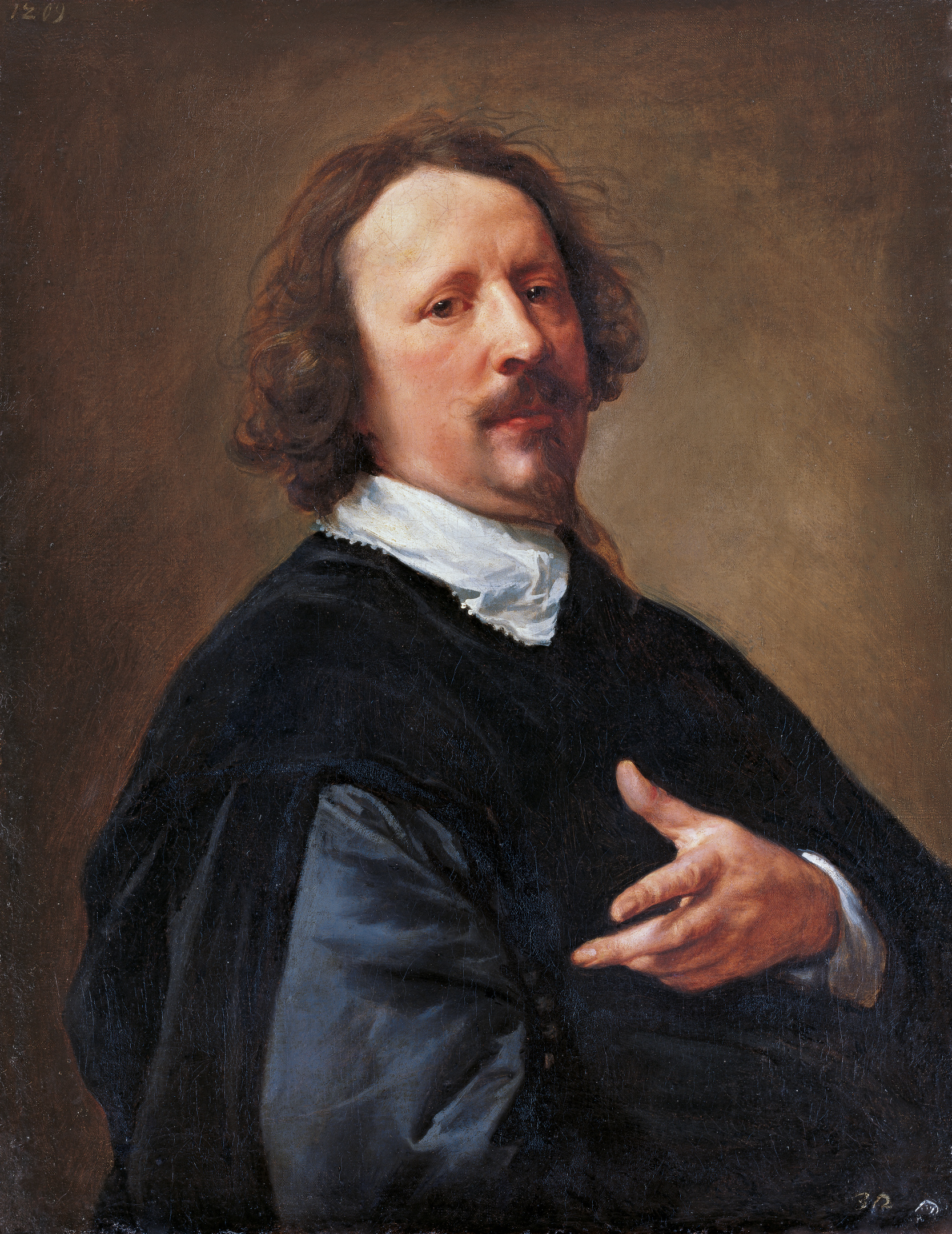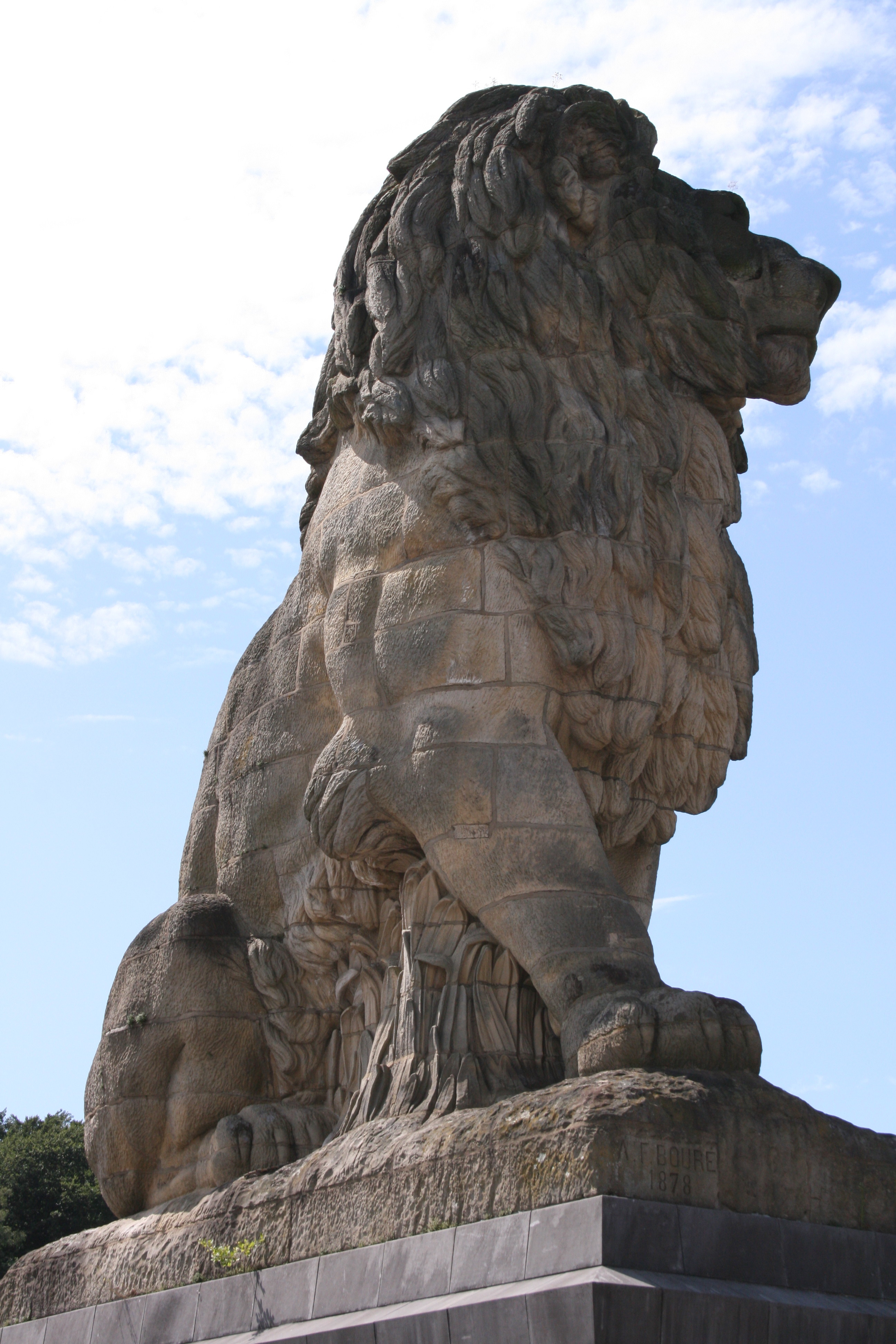|
Virginie Bovie
Virginie Bovie (1821–1888), full name Joséphine-Louise-Virginie Bovie, was a Belgian painter and arts patron. In 1870, she was described as "well known", but she has fallen into neglect in the 20th and early 21st centuries and only seven of her more than 200 works have been located. Life and career Bovie was born in Brussels and studied drawing first under Frans-Karel Deweirdt (1799–1855) before becoming part of the painting atelier of Antoine Wiertz (1806–1865), whose "megalomanic conceptions" she is said to have picked up. From 1850 forward, she regularly exhibited her works at the annual salons of Brussels, Antwerp, and Ghent. These were historical and allegorical scenes, portraits or genre pieces. By the time she was 30, Bovie had executed two large-scale paintings for her parish church. She began a tour of Italy in 1855 with her older sister, Louise Bovie, a writer whose collected stories were published posthumously in 1870. Of the 300 Belgian painters, sculptors, ... [...More Info...] [...Related Items...] OR: [Wikipedia] [Google] [Baidu] |
Brussels
Brussels (french: Bruxelles or ; nl, Brussel ), officially the Brussels-Capital Region (All text and all but one graphic show the English name as Brussels-Capital Region.) (french: link=no, Région de Bruxelles-Capitale; nl, link=no, Brussels Hoofdstedelijk Gewest), is a region of Belgium comprising 19 municipalities, including the City of Brussels, which is the capital of Belgium. The Brussels-Capital Region is located in the central portion of the country and is a part of both the French Community of Belgium and the Flemish Community, but is separate from the Flemish Region (within which it forms an enclave) and the Walloon Region. Brussels is the most densely populated region in Belgium, and although it has the highest GDP per capita, it has the lowest available income per household. The Brussels Region covers , a relatively small area compared to the two other regions, and has a population of over 1.2 million. The five times larger metropolitan area of Brusse ... [...More Info...] [...Related Items...] OR: [Wikipedia] [Google] [Baidu] |
Naples
Naples (; it, Napoli ; nap, Napule ), from grc, Νεάπολις, Neápolis, lit=new city. is the regional capital of Campania and the third-largest city of Italy, after Rome and Milan, with a population of 909,048 within the city's administrative limits as of 2022. Its province-level municipality is the third-most populous metropolitan city in Italy with a population of 3,115,320 residents, and its metropolitan area stretches beyond the boundaries of the city wall for approximately 20 miles. Founded by Greeks in the first millennium BC, Naples is one of the oldest continuously inhabited urban areas in the world. In the eighth century BC, a colony known as Parthenope ( grc, Παρθενόπη) was established on the Pizzofalcone hill. In the sixth century BC, it was refounded as Neápolis. The city was an important part of Magna Graecia, played a major role in the merging of Greek and Roman society, and was a significant cultural centre under the Romans. Naples served a ... [...More Info...] [...Related Items...] OR: [Wikipedia] [Google] [Baidu] |
Composition (visual Arts)
The term composition means "putting together". It can be thought of as the organization of the elements of art according to the principles of art. Composition can apply to any work of art, from music through writing and into photography, that is arranged using conscious thought. In the visual arts, composition is often used interchangeably with various terms such as ''design, form, visual ordering,'' or ''formal structure,'' depending on the context. In graphic design for press and desktop publishing, composition is commonly referred to as page layout. The composition of a picture is different from its subject (what is depicted), whether a moment from a story, a person or a place. Many subjects, for example Saint George and the Dragon, are often portrayed in art, but using a great range of compositions even though the two figures are typically the only ones shown. Elements of design The central visual element, known as ''element of design'', ''formal element'', or ''elemen ... [...More Info...] [...Related Items...] OR: [Wikipedia] [Google] [Baidu] |
Study (art)
In art, a study is a drawing, sketch or painting done in preparation for a finished piece, as visual notes, or as practice. Studies are often used to understand the problems involved in rendering subjects and to plan the elements to be used in finished works, such as light, color, form, perspective and composition. Studies can have more impact than more-elaborately planned work, due to the fresh insights the artist gains while exploring the subject. The excitement of discovery can give a study vitality. When layers of the work show changes the artist made as more was understood, the viewer shares more of the artist's sense of discovery. Written notes alongside visual images add to the import of the piece as they allow the viewer to share the artist's process of getting to know the subject. Studies inspired some of the first 20th century conceptual art, where the creative process itself becomes the subject of the piece. Since the process is what is all-important in studies and ... [...More Info...] [...Related Items...] OR: [Wikipedia] [Google] [Baidu] |
Caspar De Crayer
Gaspar de Crayer or Jasper de CrayerName variations: Caspar de Crayer and Gaspard de Crayer (18 November 1584 – 27 January 1669) was a Flemish painter known for his many Counter-Reformation altarpieces and portraits. He was a court painter to the governors of the Southern Netherlands and worked in the principal cities of Flanders where he helped spread the Rubens style.Gaspar de Crayer at the Hans Vlieghe. "Crayer, Gaspar de." Grove Art Online. Oxford Art Online |
Rubens
Sir Peter Paul Rubens (; ; 28 June 1577 – 30 May 1640) was a Flemish artist and diplomat from the Duchy of Brabant in the Southern Netherlands (modern-day Belgium). He is considered the most influential artist of the Flemish Baroque tradition. Rubens's highly charged compositions reference erudite aspects of classical and Christian history. His unique and immensely popular Baroque style emphasized movement, colour, and sensuality, which followed the immediate, dramatic artistic style promoted in the Counter-Reformation. Rubens was a painter producing altarpieces, portraits, landscapes, and history paintings of mythological and allegorical subjects. He was also a prolific designer of cartoons for the Flemish tapestry workshops and of frontispieces for the publishers in Antwerp. In addition to running a large workshop in Antwerp that produced paintings popular with nobility and art collectors throughout Europe, Rubens was a classically educated humanist scholar and diplomat w ... [...More Info...] [...Related Items...] OR: [Wikipedia] [Google] [Baidu] |
Flemish Baroque Painting
Flemish Baroque painting refers to the art produced in the Southern Netherlands during Spanish control in the 16th and 17th centuries. The period roughly begins when the Dutch Republic was split from the Habsburg Spain regions to the south with the Spanish recapturing of Antwerp in 1585 and goes until about 1700, when Spanish Habsburg authority ended with the death of King Charles II.Vleighe, p. 1. Antwerp, home to the prominent artists Peter Paul Rubens, Anthony van Dyck, and Jacob Jordaens, was the artistic nexus, while other notable cities include Brussels and Ghent. Rubens, in particular, had a strong influence on seventeenth-century visual culture. His innovations helped define Antwerp as one of Europe's major artistic cities, especially for Counter Reformation imagery, and his student Van Dyck was instrumental in establishing new directions in English portraiture. Other developments in Flemish Baroque painting are similar to those found in Dutch Golden Age painting, w ... [...More Info...] [...Related Items...] OR: [Wikipedia] [Google] [Baidu] |
Schaerbeek
(French language, French and History of Dutch orthography, archaic Dutch, ) or (contemporary Dutch language, Dutch, ) is one of the List of municipalities of the Brussels-Capital Region, 19 municipalities of the Brussels, Brussels-Capital Region, Belgium. Located in the north-eastern part of the region, it is bordered by the City of Brussels, Etterbeek, Evere and Saint-Josse-ten-Noode. In common with all of Brussels' municipalities, it is legally Multilingualism, bilingual (French–Dutch). Schaerbeek has a multicultural identity stemming from its diverse population. , the municipality had a total population of 132,861 inhabitants, 66,010 men and 66,851 women, for an area of , which gives a population density of . Toponymy Etymology The first mention of Schaerbeek's name was ''Scarenbecca'', recorded in a document from the Roman Catholic Archdiocese of Cambrai, Bishop of Cambrai in 1120. The origin of the name may come from the Franconian languages, Franconian (Old Dutch) w ... [...More Info...] [...Related Items...] OR: [Wikipedia] [Google] [Baidu] |
Still Life
A still life (plural: still lifes) is a work of art depicting mostly wikt:inanimate, inanimate subject matter, typically commonplace objects which are either natural (food, flowers, dead animals, plants, rocks, shells, etc.) or artificiality, man-made (drinking glasses, books, vases, jewelry, coins, pipes, etc.). With origins in the Middle Ages and Ancient Greco-Roman art, still-life painting emerged as a distinct genre and professional specialization in Western painting by the late 16th century, and has remained significant since then. One advantage of the still-life artform is that it allows an artist much freedom to experiment with the arrangement of elements within a composition of a painting. Still life, as a particular genre, began with Netherlandish art, Netherlandish painting of the 16th and 17th centuries, and the English term ''still life'' derives from the Dutch word ''stilleven''. Early still-life paintings, particularly before 1700, often contained religious and al ... [...More Info...] [...Related Items...] OR: [Wikipedia] [Google] [Baidu] |
Estate (law)
An estate, in common law, is the net worth of a person at any point in time, alive or dead. It is the sum of a person's assets – legal rights, interests and entitlements to property of any kind – less all liabilities at that time. The issue is of special legal significance on a question of bankruptcy and death of the person. (See inheritance.) Depending on the particular context, the term is also used in reference to an estate in land or of a particular kind of property (such as real estate or personal estate). The term is also used to refer to the sum of a person's assets only. The equivalent in civil law legal systems is patrimony. Bankruptcy Under United States bankruptcy law, a person's estate consists of all assets or property of any kind available for distribution to creditors. However, some assets are recognized as exempt to allow a person significant resources to restart his or her financial life. In the United States, asset exemptions depend on various ... [...More Info...] [...Related Items...] OR: [Wikipedia] [Google] [Baidu] |
Antoine-Félix Bouré
Antoine-Félix Bouré (8 July 1831 – 8 April 1883), known in his own time as Félix Bouré but sometimes found in modern scholarship as Antoine Bouré, was a Belgian sculptor, best known for his monumental lions. Life and career Bouré was born in Brussels as the Belgian war of independence was drawing to a close. He studied locally first under Guillaume Geefs and then from 1846 to 1852 under Eugène Simonis at the Royal Academy for Fine Art, going abroad to complete his training at the Academy of Fine Arts at Florence. In his studies, he followed the same course as his older brother, Paul Bouré. Paul died in his mid-twenties when Antoine-Félix was only 17. Bouré was among the artists whose work was exhibited at the Musée Bovie, a ''grand maison'' built by the painter Virginie Bovie on the Rue de Trône, Brussels. In 1868, he was one of sixteen co-founders of the Société Libre des Beaux-Arts, an avant-garde society that provided exhibition space alternative to that ... [...More Info...] [...Related Items...] OR: [Wikipedia] [Google] [Baidu] |




_-_Bouquet_of_Flowers_in_a_Ceramic_Vase.jpg)
